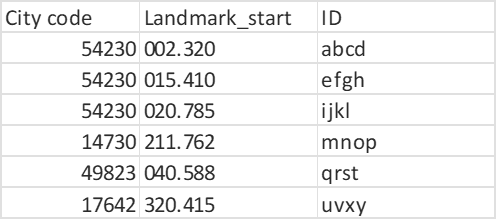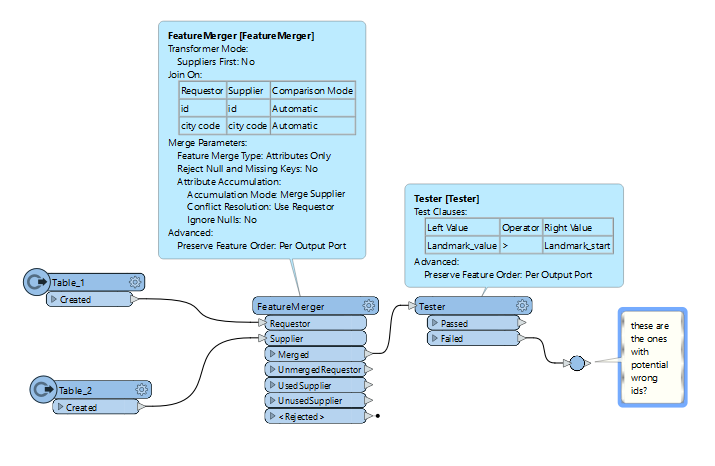Hi,
I am trying to do check if data is correct in one of my tables compared to another one. To do that, I thought about merging/joining the two tables based on columns and conditions.
The common column between the two tables is the City Code (postcode). Then I need to compare landmark values, which represent the location of objects in space.
I managed to join them based on the City Code column but I don’t manage to do the landmark values comparison yet.
More context:
My actual data is fields of grass along roads. Each section of road belongs to a city (City Code) and is separated into categories of landmarks. For example a road within city 1 is separated into groups of landmarks ranging from 1 to 1.5; 2 to 3; etc.; and the field X is situated at a specific landmark value 2.5.
So the field should be in the landmark range 2 to 3 because its landmark value is higher than 2.
The tables:
The first table has 3 columns and links city code and landmarks to a unique ID:
- City code: the city postcode
- Landmark_start: the starting point for the landmark range
- ID: a corresponding unique ID

The second table is my actual custom data where each line represents a field of grass.
- City_code: same as above
- Landmark_value: landmark value of the field
- ID: “should be” the same unique ID from above based on the City Code and the Landmark_object

---
The problem is the unique IDs are not always correct and so I need a way to check and compare them. The basic logic will involve matching the City Code from the two tables (I’ve already done this with a FeatureJoiner), and then comparing the landmark values to the landmark ranges to make sure they match correctly (I’ve not found how to do this).
How could I add a joining condition based on the data in the two tables? Something like Landmark_value > Landmark_start
I didn’t find how to do that in the FeatureJoiner transformer. In the FeatureMerger transformer, a conditionnal value is possible but it seems to be only by table and not mixing data from the two tables.
Hope my data tables and context is understable, I tried to describe as much as possible.







